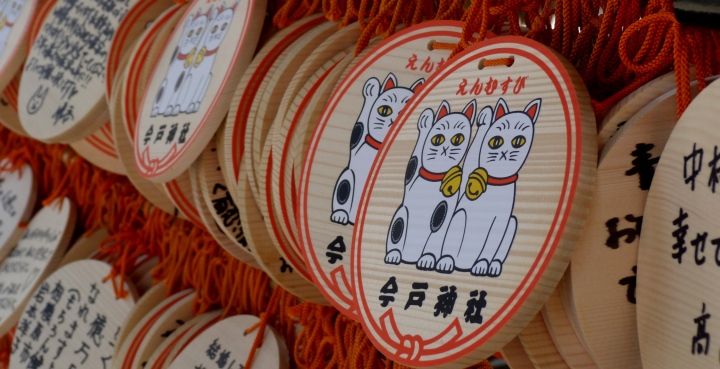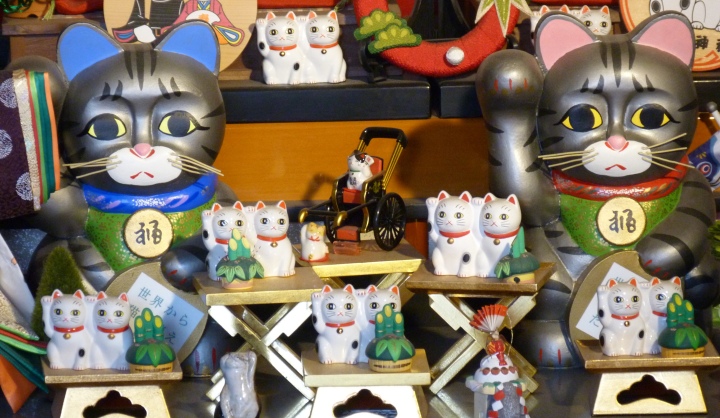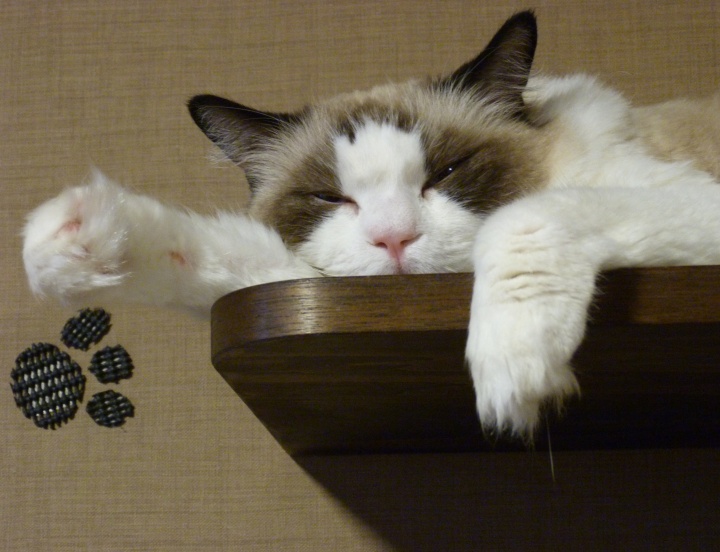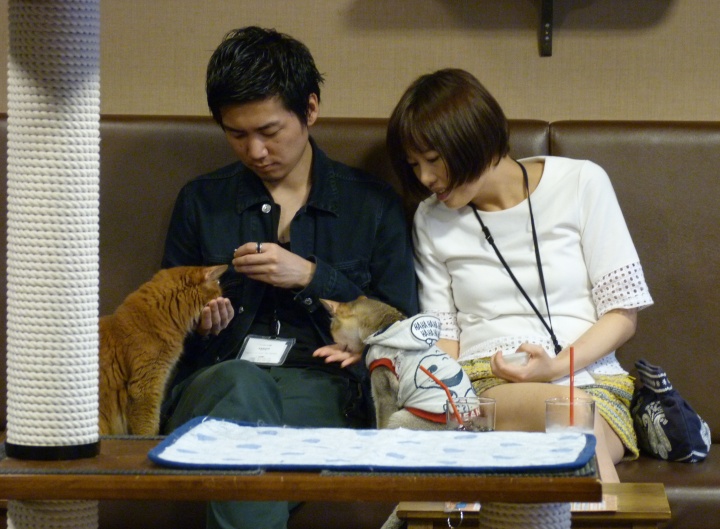 Tokyo’s obsession with cats.
Tokyo’s obsession with cats.
‘Hello Kitty’, cat-ears in pop culture, maneki neko lucky cats, the home of the original cat cafe – Japan is seemingly obsessed with moggies, and Tokyo is no exception.
There are temples dedicated to cats. In a small corner at Gotokuji there are hundreds of lucky cat figures, their little arms raised in greeting. Small ones perched on stone ledges, looked over by larger ones, towered over by those that are bigger still. One nestled in the crook of Budhha’s elbow. Others, a little muddied, crouched on the ground. Some were cracked and broken. None were touched. All were shown reverence. Legend has it that during the Edo period the chief priest of the temple had a cat that he cared for very much. One day, feudal lord Ii Naotaka passed by with his servants and saw the cat, which appeared to be waving at him to come inside. Curious, they entered and were greeted by the priest. As the priest served them tea a thunderstorm broke outside. Grateful to the cat and the priest, Ii later donated rice crops and land to the then-poor temple, elevating it to prosperity. These figurines, or maneki neko have become associated with good luck and the supernatural in Japan, and people come to make offerings to them when their wishes come true.

Another Legend, also with it’s origins in Edo Tokyo, tells how a poor woman down on her luck was forced to give up her cat. She let it go in Imado Shrine. That night, the cat appeared to her in a dream, and told her to make a doll in it’s own image. The woman sold the dolls and lived happy ever after. The male and female Maneki Neko sit very close together, a symbol of togetherness and that ‘happy ever after’. The deities worshipped at Imado are Izanagi and Izanami – the original power couple, whose marriage resulted in the creation of Japan and the birth of many gods. All of this adds up to one thing – Imado is popular amongst those wishing to make a good match and marry.



Imado used to be an area where many potters lived. They are now long gone, but at Senso-ji in the Nakamise area there’s a shop called Sukeroku. It’s postage stamp sized , just big enough for a couple of people, and has been run by the same family for one hundred and fifty years. There are hundreds of tiny ceramic figures; and many, many variations of the makeki neko.
Cats don’t just appear in ceramic form. There are ‘catuccinos’, cat shaped bicuits and of course cat cafes.



There are over fifty cat cafes in Tokyo. We went to Calico in Shinjuko – forty-two cats spread over two floors and many, many admirers. Young girls waving feathers on string to entice moggies to play, couples feeding felines treats and one man sitting quietly reading a book, a cat nestled between his legs, another sitting at his side. The attraction is understandable – apartments in the city are so small, and many do not allow ownership of pets. As always, the cats just did their own thing, lounging on sofas and shelves and sitting in paper bags and boxes. ‘Entertaining humans; I don’t think so’, they seemed to say – until the treats came out and they came running.






Practical Stuff.
Gotokuji. 2-24-7 Setagaya
Imado Jinja 1-5-22 Imado, Taito
Catuccinos at Oshiage Nyanko – Oshiage Sumida 3-10-9
Cat Cafe Calico Shinjuku Kabukicho 1 chome 16-2

Thank you Tracey! I had often womder d why those waving cats were so popular.
LikeLiked by 1 person
Me too!
LikeLike
I love the legends behind those figurines, which dare I say are really growing on me lately! I may have to start a collection.. And that is some serious latte art.
LikeLike
I think those waving cats are really cute – a collection would be a great idea!
LikeLike
That catuccino is so cute!! And Gotokuji is in my neighbourhood!
LikeLike
Yes, the catuccino was a little work of art!
LikeLike
Thanks for sharing the story behind those cat figurines, and the cat-cupcake looks so beautiful.
LikeLike
Isn’t the cat cupcake cute? Almost a shame to eat it!
LikeLiked by 1 person
Personally not a huge fan of cats… but thanks for informing us about the interesting story of the waving cat. I always wondered about that. 🙂
LikeLiked by 1 person
I love this post. We visited a cat cafe in Brooklyn…I thought it was bizarre…my girls were enthralled and wanted to take at least one cat back with us. Such silliness but interesting that cats behave the same wherever they are. 🙂
LikeLike
And the cattucino looks so tempting. It gives me an idea, to tell the Barista at the coffee house where I used to come. Next time, he can try this shape of cat in my cappuccino 😀
LikeLike
I think this is not easy! I am curious to see if your barista can do it!
LikeLike
So cute! You know more about the mankei neko than I do! I would like to go to the cat temple and see all the little dolls. Then go to a cat cafe afterword, naturally. I’ve never heard the word moggie before.
LikeLiked by 1 person
Your comment got me thinking about the word moggy. Apparently in some areas of England, ‘moggy’ used to mean mouse, and cats were called ‘moggy catchers’ and over time the catcher bit got lost.
LikeLike